fiber and blood sugar - part 1 + 2: beyond digestion + your daily fiber blueprint
with guest Dr. Lola MacLean
Most of you enjoyed my special feature by Dr. Lola MacLean so much that I have asked her back to talk to us about fiber. Following Dr. Lola’s terrific fiber primer, I will share exactly how to get enough fiber and give food and meal ideas!
Fiber is a crucial component to a healthy, blood sugar balancing diet and plays a big part in optimal metabolic health. If you missed her introductory post, meet gut health expert Dr. Lola MacLean here:
meet gut health expert Dr. Lola MacLean
One of the most incredible things about social media is that it has allowed an introvert like me to meet so many amazing women. I honestly do not think I would have connected with so many brilliant women without platforms like Instagram and Substack. Putting myself “out there” on social media somehow feels safe in a way that I can’t describe. I can be m…
part 1: beyond digestion
Fiber and Metabolic Health: The Gut Connection
Ready for a wild statistic? A 2019 study estimated that 88% of American adults are metabolically unhealthy (1). Metabolic health—which encompasses balanced blood sugar, optimal insulin function, stable cholesterol, and a healthy weight—is essential for overall well-being and chronic disease prevention.
One often overlooked piece in this equation is dietary fiber (super sexy, I know). This nutritional component plays a pivotal role in metabolic health. Some individuals find themselves unable to tolerate fiber-rich foods, which can make improving their metabolic health seem daunting.
In this post, I'll share what fiber is, its types, and its role in blood sugar regulation. Since my specialty is gut health, I'll also share with you the link between the gut, blood sugar balance, and fiber- as well as a couple of tips to ease into a fiber-rich diet if you're struggling to tolerate it.
What Is Fiber?
Fiber is a type of carbohydrate that our bodies cannot digest. Unlike other carbs that are broken down into sugar molecules, fiber passes through the digestive system relatively intact. There are two primary types of dietary fiber:
Soluble Fiber:
This type of fiber dissolves in water and forms a gel-like substance in the gut. It’s found in foods like oats, beans, lentils, apples, and flaxseeds.
Soluble fiber is well-known for its ability to regulate blood sugar by slowing down the absorption of glucose. It also helps lower LDL cholesterol.
Insoluble Fiber:
Insoluble fiber does not dissolve in water and adds bulk to stool. It’s found in whole grains, nuts, seeds, and many vegetables.
This type of fiber supports digestive regularity and prevents constipation by promoting efficient movement through the digestive tract.
Both types of fiber play distinct but complementary roles in gut and metabolic health. The magic number for total fiber per day is variable, but ideally, you're getting 25-35 grams per day.
Fiber and Blood Sugar Balance
Blood sugar balance is crucial for preventing energy crashes, mood swings, and long-term health issues like diabetes. Fiber does a few different things to help bring balance:
Slows Absorption: Soluble fiber slows the absorption of sugar into the bloodstream, preventing sharp spikes and crashes in blood glucose levels.
Improves Insulin Sensitivity: Regular consumption of fiber supports the body's response to insulin, reducing the risk of insulin resistance.
Feeds Gut Bacteria: Certain types of fiber act as prebiotics, feeding beneficial gut bacteria that produce short-chain fatty acids (SCFAs). These SCFAs help regulate glucose metabolism and reduce inflammation. SCFAs also improve insulin secretion and HbA1c levels by enhancing gut production of gut peptides such as glucagon-like peptide-1 (GLP-1) and peptide YY (PYY) (2)
The Link Between Fiber, GLP-1, and Peptide YY
Fiber’s influence on metabolic health is through its impact on gut-derived hormones like GLP-1 (glucagon-like peptide-1) and Peptide YY (PYY). These hormones are secreted by the gut in response to food intake and play critical roles in regulating blood sugar, appetite, and metabolism.
GLP-1 and Blood Sugar Balance: GLP-1 enhances insulin secretion in response to rising blood sugar levels, helping maintain glucose balance. It also slows gastric emptying, allowing for a steadier release of glucose into the bloodstream.
Peptide YY and Satiety: PYY is another hormone released after eating, particularly in response to fiber-rich foods. It works by signaling fullness to the brain and reducing appetite, making it a valuable ally for weight management and preventing overeating.
Anti-Inflammatory Effects: Both GLP-1 and PYY have anti-inflammatory properties, which can benefit metabolic and gut health by reducing systemic and intestinal inflammation.
Fiber-rich foods, especially those high in soluble fiber, stimulate the production of both GLP-1 and PYY. This results in improved insulin sensitivity, stable blood sugar levels, and enhanced satiety.
The Gut Health Connection
I am a firm believer that all dis-ease starts in the gut. Gut health and metabolic health are deeply interconnected, with fiber playing a pivotal role in this relationship. Your gut microbiome—a diverse community of bacteria living in your digestive tract—thrives on fiber. Here’s how:
Prebiotic Function: Certain fibers, like inulin and resistant starch, are prebiotics. They feed beneficial gut bacteria, helping them produce SCFAs like butyrate, acetate, and propionate. SCFAs support gut barrier integrity, reduce inflammation, and improve insulin sensitivity.
Microbial Diversity: A fiber-rich diet promotes a diverse microbiome, which is associated with better metabolic and immune health.
Gut-Brain Axis: A healthy gut microbiome produces neurotransmitters and hormones that influence appetite regulation, mood, and even cravings.
By nourishing your gut with fiber, you create a positive feedback loop that supports both gut and metabolic health.
Why Can’t I Tolerate Fiber?
For some individuals, increasing fiber intake can lead to digestive discomfort, including bloating, gas, or constipation. This intolerance is often due to:
Dysbiosis: An imbalance in gut bacteria may lead to difficulty digesting certain fibers.
Low Enzyme Production: Insufficient digestive enzymes can hinder the breakdown of fibrous foods.
Sudden Increase: Adding too much fiber too quickly can overwhelm the digestive system.
If you’re experiencing fiber intolerance, it’s important to address these underlying issues while gradually increasing your fiber intake.
Tips for Incorporating Fiber Without Discomfort
Start Slow: Begin with small amounts of fiber and gradually increase your intake over weeks. Even adding an additional gram or two per week can start to make a difference!
Choose Soluble Fiber: Soluble fiber is often gentler on the gut and less likely to cause bloating. Focus on foods like basil seeds, chia seeds, and cooked vegetables. Soluble fiber has also been shown to be more beneficial for blood sugar balance - but you still need some insoluble fiber too!
Cook Your Veggies: Cooking breaks down some of the fiber structure, making it easier to digest.
Hydrate: Fiber absorbs water, so staying well-hydrated is essential for preventing constipation. Pro-tip: hydrate between meals... not at meals. Drinking too much liquid at a meal alters digestion and can cause more bloating and discomfort.
The Long-Term Benefits of Fiber
Fiber is one of the most impactful nutrients for gut and metabolic health. By incorporating fiber into your diet, you’re not only supporting gut health but also investing in long-term metabolic health. Consistent fiber intake can:
Reduce the Risk of Chronic Disease: by helping stabilize blood sugar and lower inflammation. This lowers the risk of heart disease, type 2 diabetes, and certain cancers.
Promote Healthy Weight Management: Support satiety and reduce overall calorie intake.
Enhance Digestive Regularity: Prevent constipation and promote a healthy gut microbiome.
For those who struggle with fiber tolerance, patience, and a strategic approach can make all the difference - go slow and listen to your body.
References:
https://www.liebertpub.com/doi/10.1089/met.2018.0105
https://www.sciencedirect.com/science/article/pii/S1756464621001493#:~:text=For%20instance%2C%20fermentation%20of%20dietary,peptide%20YY%20(PYY)%20(Canfora
Dr. Lola MacLean is a family nurse practitioner and functional gut health expert specializing in helping women find relief from bloating, irregular bowel movements, and anxiety. As the founder of Haelan Empowered, she offers lab testing, personalized protocols, and 1:1 coaching to uncover the root causes of symptoms and deliver real answers. Her approach combines functional medicine with practical lifestyle changes, focusing on the gut-brain connection to provide lasting relief. Connect with her on Instagram @lolamacleandnp or visit haelanempowered.com.
part 2: your daily fiber blueprint
by Beth Bollinger of Nest Wellness
There seems to be a myth that people with type 2 diabetes or those watching their blood sugar cannot tolerate fiber. I want to assure you that there are many ways to incorporate fiber without spiking blood sugar, and fiber is indeed essential for balancing blood sugar, reducing cholesterol, and achieving good metabolic health!
I will share exactly how to get enough fiber into your day!
Here is a list of foods in order of their fiber content per 100 grams and how to use or eat them!
Legumes, Seeds + Nuts
Psyllium husk flakes 80g (make keto “cream of wheat” or grain-free focaccia)
Basil seeds: 50g (make No Oats!)
Chia seeds: 34.4g (make No Oats or chia crackers)
Flackers flax crackers: 34.4g (enjoy with any meal, spread with garlic hummus or olive tapenade)
Flaxseeds: 27.3g (make No Oats!)
Navy beans (dried): 15.8g (make this soup)
Lentils (dried): 15.6g (make lentil soup, or use lentils half and half when you use ground meat in a recipe!)
Almonds: 12.5g (make curried almonds)
Black beans (dried): 12.2g (make a burrito bowl with protein of choice, guacamole, greens, salsa, and cauliflower rice)
Chickpeas (dried): 12.2g (make garlic hummus)
Pistachios: 10.6g (make this pistachio chocolate torte)
Hemp hearts: 10g (make No Oats! or add hemp hearts to this easy blender soup)
Grains
Oat fiber: 75g (make keto croissants and monkey bread)
Oat bran: 15.4g (eaten as a hot cereal)
Popcorn (air-popped): 14.5g (enjoy with extra virgin olive oil and mixed nuts for a better glucose response)
Quinoa (uncooked): 7.0g with ample protein, healthy fat, and veggies for a good glucose response
Barley (uncooked): 6.5g with ample protein, healthy fat, and veggies for a good glucose response
Brown rice (uncooked): 3.5g with ample protein, healthy fat, and veggies for a good glucose response
Fruits + Berries
Avocado: 6.8g (make avocado toast with this blood sugar friendly, high-fiber flax bread)
Raspberries: 6.5g (top No Oats)
Blackberries: 5.3g (top No Oats)
Pears (with skin): 3.1g (make this pear galette)
Apples (with skin): 2.4g (enjoy sliced apples with nut butter)
Blueberries: 2.4g (top your No Oats)
Oranges: 2.2g (make this grain-free, paleo citrus cake)
Bananas: 2.6g (make triple chocolate banana bread)
Vegetables
Artichokes: 8.6g (make roasted artichokes with herb butter)
Green peas: 5.7g (make soup!)
Broccoli: 2.6g (make this soup)
Brussels sprouts: 3.8g (roast them)
Sweet potato: 3.0g (make sweet potato chili)
Carrots: 2.8g (enjoy with guacamole or garlic hummus)
Spinach: 2.2g (add to scrambled eggs or soups)
More ideas for adding fiber!
Cacao nibs: 31.7g (sprinkle on No Oats, yogurt bowls, or basil seed pudding)
Dark chocolate (70-90% cocoa): 10.9g (enjoy a square or two after dinner)
Coconut (dried): 9.0g (make my breakfast cookies or holiday breakfast cookies)

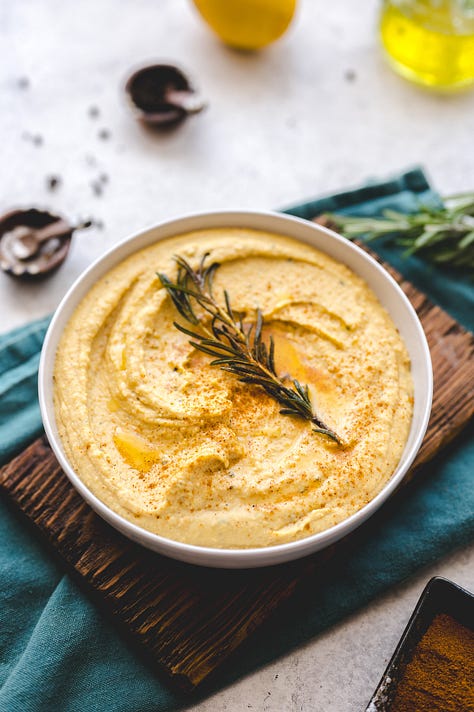
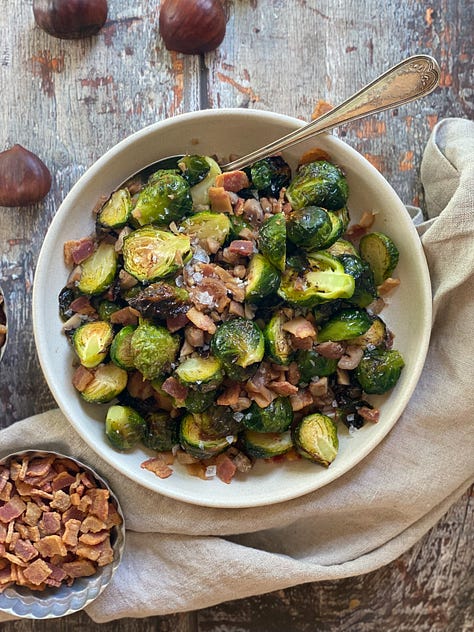
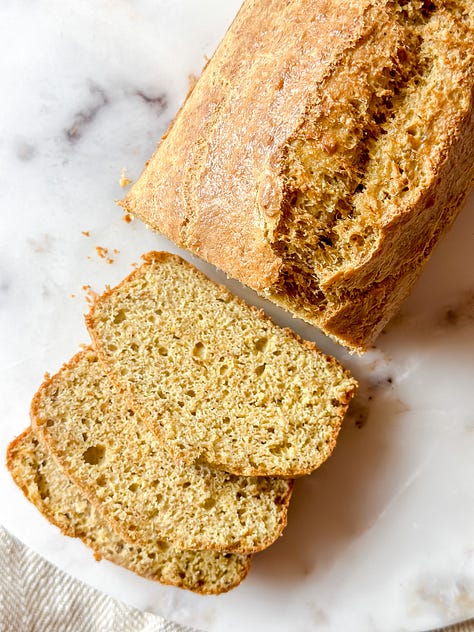
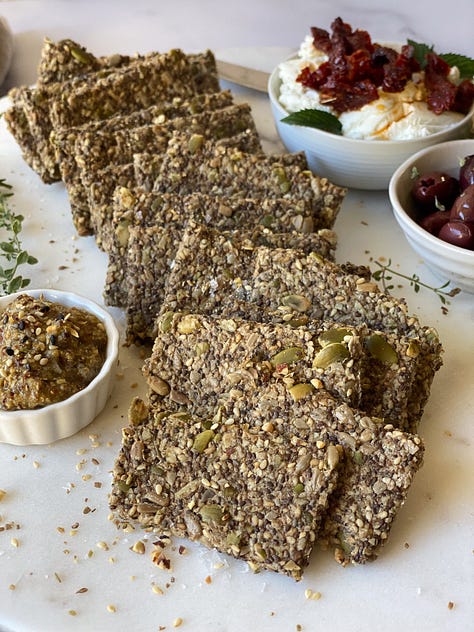
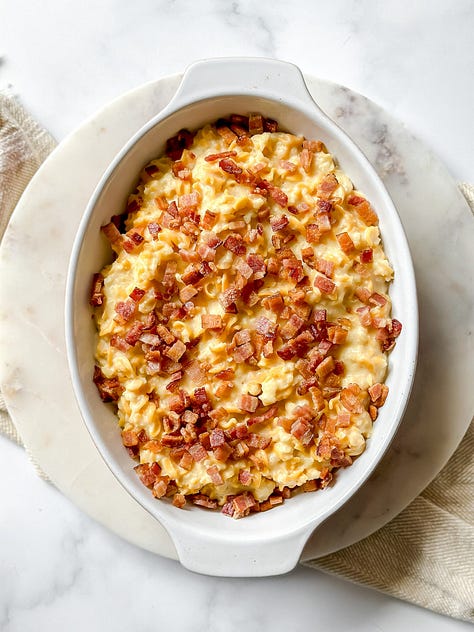
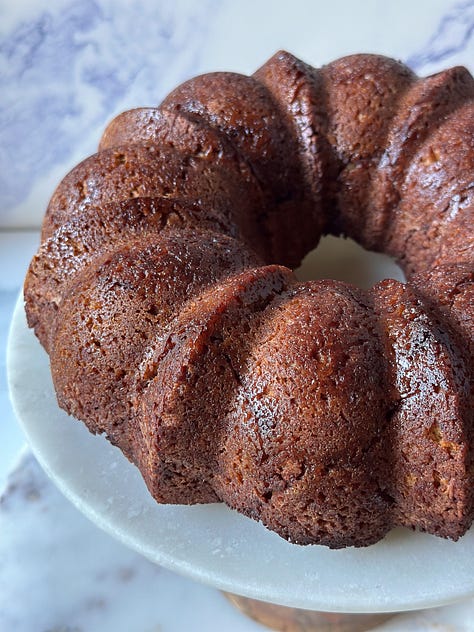
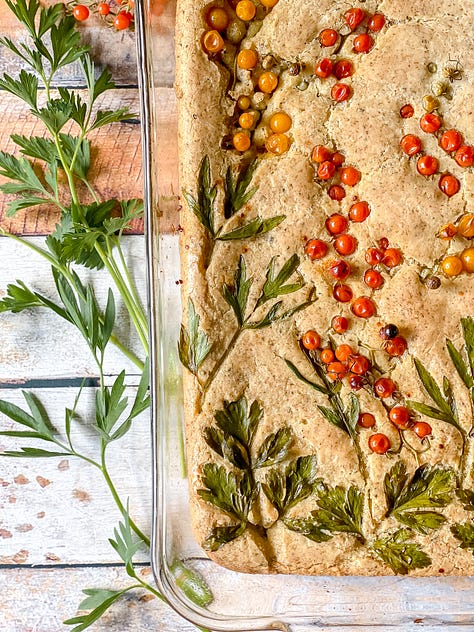
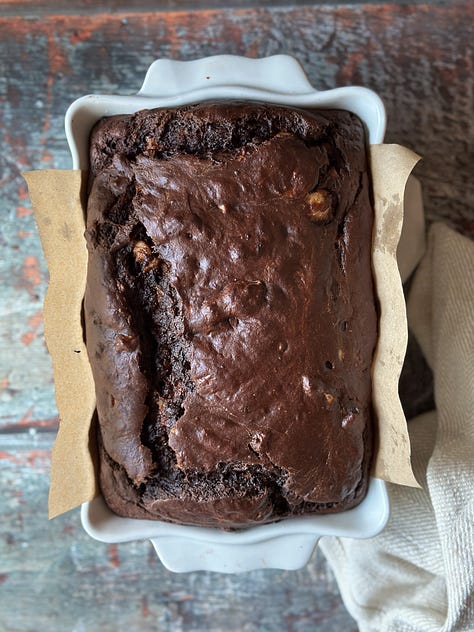
Here's a practical guide for incorporating high-fiber foods into each meal to reach about 10g of fiber per meal (30+ grams per day)
BREAKFAST IDEAS (10-15g fiber):
No Oats: (2 tablespoons basil or chia seeds, 2 tablespoons hemp hearts, 2 tablespoons ground flax) (20g with basil seeds, 12 grams of fiber with chia seeds) 1/4 cup berries (1g)
Greek yogurt with 2 tablespoons basil seeds (15g) and topped with raspberries (1g)
Chia pudding: 3 tablespoons chia seeds (10g) with unsweetened coconut milk, topped with 1/4 cup berries (1g) and 1 tablespoon cacao nibs (3g)
Breakfast cookies: 15 grams of fiber each
Green smoothie: 2 cups spinach (4.4g), 1/2 avocado (5g), 2 tablespoons flaxseeds (5.4g), protein powder
Egg and vegetable skillet:
2-3 eggs
2 cups sautéed vegetables like broccoli and Brussels sprouts (6g)
1/4 avocado (2.5g)
2 tablespoons almonds (1.5g)
LUNCH IDEAS (10-12g fiber):
Large salad with:
3 cups mixed greens (6g)
1/2 avocado (5g)
2 tablespoons pumpkin seeds (2g)
Protein of choice
Lettuce wraps filled with:
Tuna or chicken salad
1/2 cup shredded vegetables (1.5g)
1/2 cup lupini beans (7g)
1/4 avocado (2.5g)
DINNER IDEAS (10-12g fiber):
Cauliflower rice bowl (2g) topped with:
Roasted brussels sprouts (3.8g)
1/2 cup lupini beans (7g)
Olive oil and herbs
Zucchini noodles (2g) with:
Low-carb vegetable sauce (3g)
1 cup mixed mushrooms (2g)
1/4 cup artichoke hearts (2g)
2 tablespoons pine nuts (1.3g)LOW-CARB SNACK IDEAS (3-5g fiber each):
matcha latte with 1 tbsp basil seeds (7.5g)
lupini bean snacks (7g per 1/2 cup)
1/2 avocado + everything bagel spice (5g)
1/3 cup mixed nuts (4g)
celery sticks (2g) with almond butter (1.5g)
1 oz dark chocolate (85% or higher) (3g)
TIPS FOR LOW-CARB, HIGH-FIBER, BLOOD SUGAR SUCCESS:
Focus on above-ground vegetables; root vegetables contain more natural sugars, are higher in carbs, and are more likely to spike blood sugar. When you do consume these complex carbs, pair them with protein and healthy fat.
Include avocados daily
Use lupini beans in bean, flour, and pasta form! (they're lower in carbs and higher in fiber and protein than other legumes)
Snack on nuts instead of low-fiber foods like chips and cookies
Include fermented vegetables daily for gut health: try fermented carrots, kimchi, fermented pickles, or sauerkraut
Use lettuce wraps instead of low-fiber, refined-grain bread
Replace grains with cauliflower rice, konjac noodles, konjac rice, lupin pasta, or zucchini noodles.
Sprinkle seeds on everything - yogurt, salads, soups, and No Oats!
When you take a fiber supplement before meals, particularly soluble fiber, it helps manage blood sugar in several ways:
Slows Digestion
The fiber forms a gel-like substance in your stomach
This slows down the rate at which food moves through your digestive system
Result: Slower, more gradual release of glucose into your bloodstream
Creates a Physical Barrier
Fiber creates a temporary barrier between digestive enzymes and carbohydrates
This reduces how quickly carbs are broken down into glucose
Result: Less dramatic blood sugar spikes after meals
Increases Satiety
Fiber helps you feel fuller
This can reduce overall food intake
Result: Lower total carbohydrate consumption
Common Fiber Supplements
Psyllium husk flakes
Glucomannan from the konjac root
Inulin
Guar fiber
Acacia fiber
Timing and Usage
Take a fiber supplement 15-30 minutes before meals with plenty of water
Start with small amounts and gradually increase
Typical effective dose: 3-5g before meals
Always check with your healthcare provider before starting supplements
Important Notes
Track your fiber intake for a few days using an inexpensive food scale and an app like Cronometer or My Fitness Pal. If you cannot get to 30+ grams of fiber daily from food, consider a supplement. Basil seeds have so much fiber that even adding 1-2 tbsp daily to food or beverages daily can be enough to get you to 30+ grams!
Fiber supplements work best as part of an overall healthy diet
Fiber supplements should not replace fiber from whole foods
Drinking adequate water is essential when taking fiber supplements. Aim for half your body weight in ounces daily.
high fiber and blood sugar-friendly favorites:
Lupin pasta - the high protein, high fiber noodle that outshines all other alternative pastas in terms of taste, texture and blood sugar response.
Konjac noodles and rice - high fiber, low carb, low calorie noodle and rice alternative that will not spike blood sugar.
Basil seeds - such an easy way to up your daily fiber intake. Enjoy as a pudding (in place of chia seeds), or in a beverage as a low carb alternative to boba.
No Oats - make your own or check out these handy single serving packets. Great as an on-the-go, take to work, or travel breakfast too!
High fiber meal plan - if you need more help getting ample fiber, this is the meal plan for you!
Fiber supplements are available on Fullscript. Save 20% always on supplements, protein powders, collagen, and, of course, fiber!
Thank you🧡
If you know someone with pre-diabetes, diabetes, PCOS, metabolic syndrome, or anyone eating for blood sugar balance, low carb, keto, refined sugar free, grain-free, gluten-free, or just eating whole food for better health, will you forward my Substack to them?
It would mean the world to me as I try to spread the word about optimal metabolic health and healthy aging.
🧡Beth






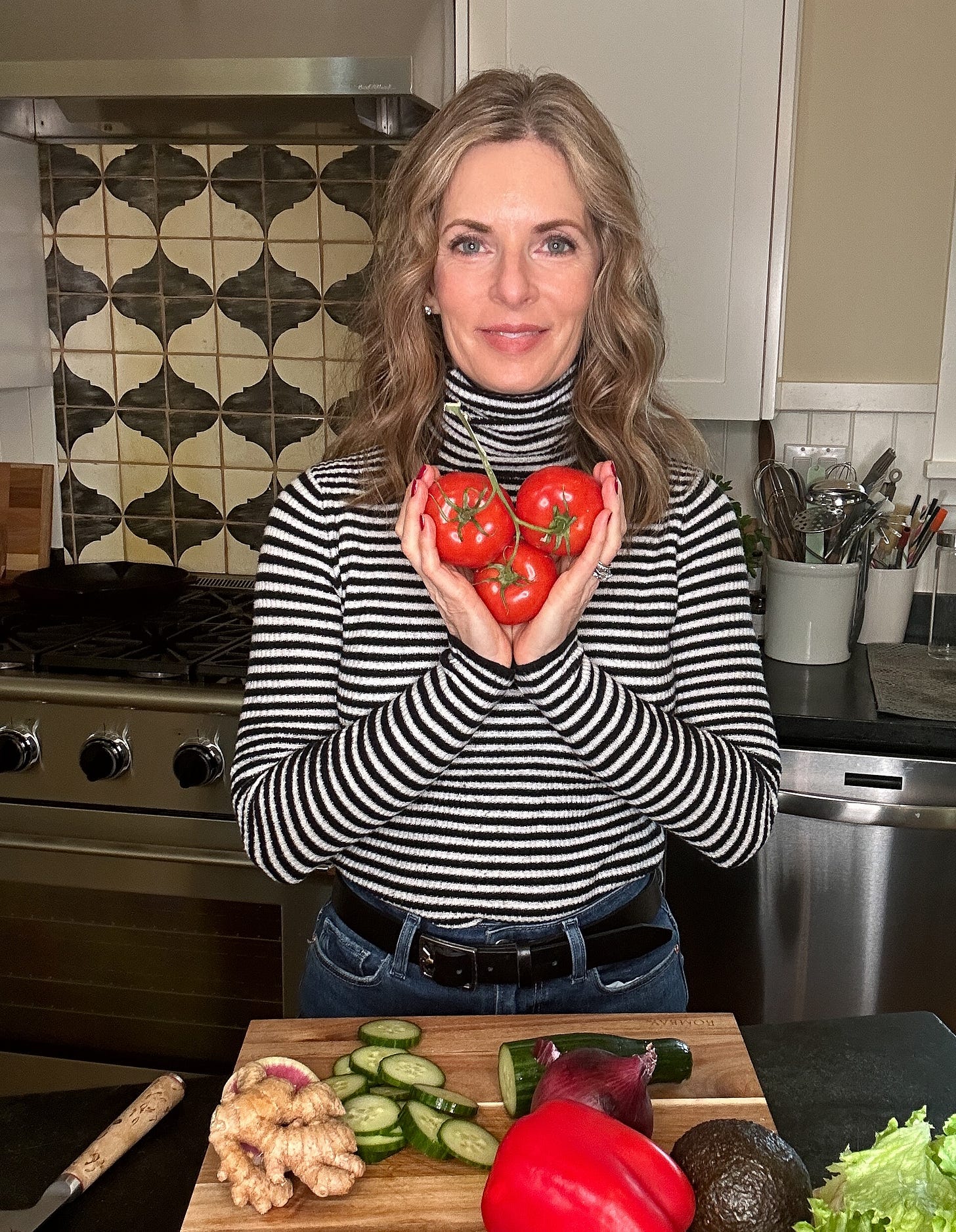





Another great, insightful piece! Thank you, Beth & Dr. Lola!
Loved this article, thank you for sharing.